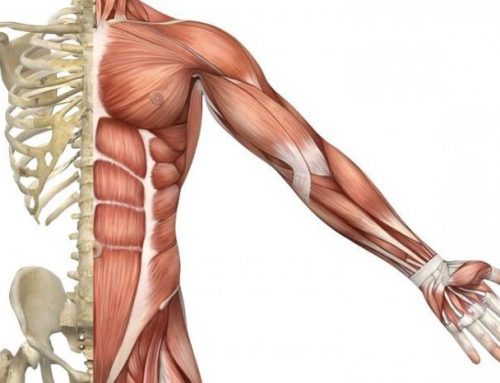In the previous chapter, we found that for optimal muscle growth stimulation, you should use a weight that allows you to perform ultimate muscle contractions in the range of 40-65 seconds.
As you can see, the optimal duration for performing muscle contractions is expressed in seconds. This creates certain inconveniences in practical application of the recommendations outlined. In order to control the mode of work expressed in seconds, it is necessary to have chronometric devices, such as a stopwatch. Therefore, experts in the field of training theory decided to express the duration of exercise not in seconds, but in the number of muscle contractions – repetitions, taking as a basis the average duration of muscle contraction.
There are different opinions on how long one repetition should be and the overall pace of the exercise. We will discuss these nuances later. For the moment, for illustration purposes, we will use the classic version. As Robert Kennedy and Dennis Weis point out in their book “Mass”, the average duration of one repetition in repetition when working to increase muscle mass is 6 seconds: 2 seconds for the projectile to travel up (overcoming work) and 4 seconds for the projectile to travel down (yielding work).
By taking the average duration of one repetition as 6 seconds, we greatly simplify the control of exercise time. Now, by comparing the average duration of one repetition to the required exercise time, we will get the number of repetitions required for an optimal muscle mass gain regimen.
Let’s perform a simple mathematical operation: divide the minimum duration of the exercise – 40 seconds – by the average duration of one repetition – 6 seconds, and we get the minimum number of repetitions that must be performed in order to increase muscle mass – 7 repetitions. Divide the maximum duration of the exercise – 65 seconds – by the average duration of one repetition, and we get the maximum number of repetitions – 11.
Thus, we have determined that when working to increase muscle mass, you should select weights that allow you to perform at least 7 repetitions per repetition. If you are unable to perform 7 reps, then the weight is too heavy. But, on the other hand, if you can perform 12 reps, it means that the weight is low and you need to increase it in this exercise.
You may notice that having traveled a long way through the jungle of biochemical terminology, we finally have the classic repetition range recommended in the basic bodybuilding literature – a range of 6 to 12 reps. And at this point, one could ask whether it was worth it to “make all this trouble” instead of going straight to the recommended number of repetitions. Such a question can be answered as follows – since you were able to get through all the previous material and get to this point, you should be clearly aware of the fact that the number of repetitions is just a reflection of the total time during which you perform the exercise! I’ll say it again. The number of reps is only a reflection of time! Failure to realize this fact can distort the most perfect training methodology.
To more clearly explain the idea of correlation between exercise time and the number of repetitions, let me give you the following example: the length of the path of movement of the weight (amplitude) when performing squats with a barbell on the shoulders and the length of the path of movement of the weight when training the lower leg muscles differs several times. In deep squats, the projectile moves about 45 centimeters, while in shin training the projectile path can be about 15 centimeters. The path of the projectile in squats is three times longer. What can be deduced from this? Two completely global conclusions follow from this:
- the duration of one repetition in squats will be approximately three times longer;
- If it takes 8 reps to perform a squat exercise for 48 seconds, then it will take three times as many reps – 24 reps – to perform a lower leg exercise for 48 seconds.
Watch the thought – 24 reps and 8 reps is a significant difference, but the duration of both exercises, expressed in seconds, not reps, will be the same – 48 seconds. Therefore, both exercises, with such a significant difference in reps, will be performed in a mode that is in the optimal time range for the greatest gains in muscle mass.
If you only watch the number of reps and completely disregard the duration of the exercise, you are simply doomed to fall into the trap of “hard to develop” muscle groups. Often, the “difficult” muscles are simply not being loaded in the optimal time frame for muscle mass gains.
So remember, and never forget – the number of repetitions very often does not reflect the optimality of the work, a more accurate indicator is the time of the exercise, expressed in seconds. Depending on the amplitude of the exercise, the height of the athlete and a number of other factors, the number of repetitions may change, but the optimal time of the exercise will remain the same.
So, having determined the optimal duration of the exercise, expressed in both seconds and repetitions, it is now necessary to determine the optimal weight to perform the specified number of repetitions. This will be discussed in the next chapter.
-
- The next chapter: 8. Weight of the weights
- Previous Chapter: 6. Increasing muscle cross-sectional area (Part 2)
The use of materials of the site in printed publications is possible only after obtaining written permission of the author of the site.






